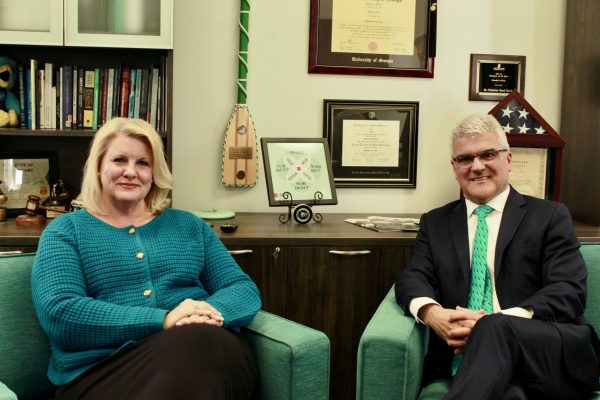UNCW professor researches Antarctic penguins
For many scientists, field work involves spending time at sea, or examining specimens in a local forest. However, for Steven Emslie Ph.D, a biology professor at UNC Wilmington, field work means traveling to a place most people never visit–Antarctica.
“I started working in Antarctica in ’92. As soon as I got down there, I realized it was a fantastic place,” Emslie said. Since then, he has made 14 trips, some of which were made possible by funds from NASA and National Geographic.
According to Emslie, Antarctica is a great place to spend a summer. “Antarctica gets its reputation from its winters when there’s total darkness,” he said. However, during the summer, the sun never sets and temperatures can rise to 30 degrees Fahrenheit.
“Ninety-nine percent of the continent is under ice. Terrestrial life is limited, but marine life is extremely diverse. I go to penguin colonies–active and abandoned ones,” Emslie said.
Emslie isn’t alone in his enthusiasm for the icy wilderness. Thirty countries have bases in Antarctica because the island’s five penguin species attract scientists from all over the world.
Emslie’s most recent work encompassed a study of the Adelie penguin populations near Antarctica’s Ross Sea. Many of the samples he studied were taken from fossilized nests.
“Adelie penguins build nests close to shore. They build their nests with pebbles and they return to the same nesting spots year after year,” Emslie said.
Antarctica’s cold climate is perfect for preserving organism remains. “Egg shells, fish bones, pieces of squid…all that stuff will preserve in these sediments,” he said. “It forms a natural archive that can be thousands of years old. It’s pretty unique to have soils down that that can build up like this. It tells you something about the environment of the past when you date the remains.”
To date findings, Emslie and his colleagues, along with many other scientists, use a technique called Accelerator Mass Spectrometry. Emslie also uses ice core records and climate records while he conducts his research.
“I can look at how penguin populations have shifted and changed with the climate,” Emslie said.
According to Emslie, there’s a direct correlation between ice and penguin populations.
“In the winter, sea ice forms around the continent and doubles its size. Algae grows inside the ice like a greenhouse,” he said.
In the spring the ice melts, and algae organisms are released into the water. Since algae is the base of the food chain, abundance in algae results in large populations of krill. The Adelie penguins eat krill, so more krill means more penguins.
Recently, Emslie’s study on the Adelie penguins was published in several journals, including “Scientific Reports.”According to Emslie, getting published is crucial to a scientist’s career.
“It’s important because that’s how you get more grants. It also establishes you as an authority,” he said.
However, getting an article published is no easy task. After collecting data in Antarctica with scientists from the University of Science and Technology of China, Emslie and his colleagues drafted the article. It was reviewed by a penguin expert, a panel of scientists and an editor before it was approved for publication.
Emslie has been doing research in Antarctica for more than 20 years, and enjoys sharing his passion with his students.
“I’ve taken students down there,” Emslie said. “I take one graduate [student] and one undergraduate student down there almost every time I go. I have one Ph. D student who’s down there now. I’ll never get tired of going down there. I see new things every time I go.”






